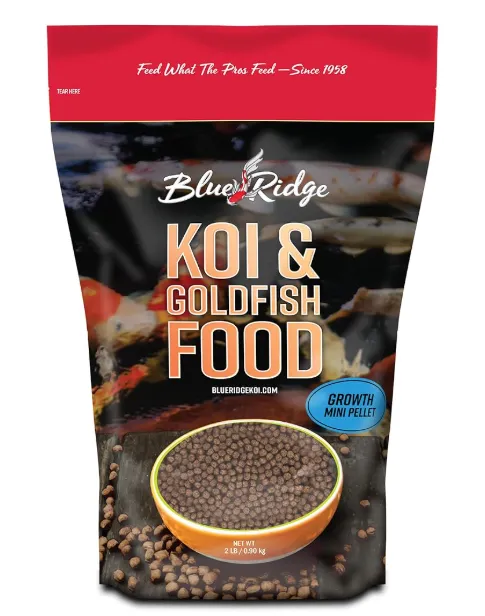

Koi Fish Food: The Ultimate Guide to Keeping Your Koi Healthy and Vibrant
Koi fish food, Koi fish are more than just aquatic pets; they’re living jewels, a symbol of elegance and tranquility. To keep them healthy and vibrant, you need to feed them right. This ultimate guide covers everything you need to know about koi fish food, from their nutritional needs to the best feeding practices.
Understanding the Importance of Nutrition for Koi Fish
Proper nutrition is the cornerstone of koi health. Koi fish require a balanced diet to grow, maintain their brilliant colors, and thrive in various weather conditions. Neglecting their dietary needs can lead to stunted growth, faded colors, and health problems.
What Do Koi Fish Eat in the Wild?
In their natural habitats, koi are omnivores. They feast on algae, small insects, worms, and plant matter. This diverse diet provides essential nutrients like proteins, vitamins, and minerals that are critical for their health. Mimicking this natural diet in captivity ensures your koi stay robust and colorful.
Types of Koi Fish Food
1. Commercial Koi Food Options
Commercial food is convenient and nutritionally balanced. Here’s a breakdown of popular options:
- Floating Pellets: Ideal for observing your koi while they eat.
- Sinking Pellets: Great for shy or bottom-dwelling koi.
- Seasonal Foods: Low-protein formulas for winter and high-protein for summer.
2. Homemade Koi Food
Making food at home allows you to control ingredients. Blend spinach, shrimp, carrots, and gelatin to create nutrient-rich meals. This DIY approach ensures freshness and eliminates harmful additives.
3. Fresh and Live Foods
Koi love natural treats like:
- Earthworms
- Mealworms
- Vegetables (peas, lettuce, zucchini)
- Fruits (watermelon, oranges)
These foods enhance their diet, providing variety and enrichment.
Key Nutritional Needs of Koi Fish
To ensure your koi thrive, focus on these key nutrients:
1. Proteins for Growth
Proteins help koi develop muscle and repair tissue. Look for commercial foods with at least 30–40% protein content.
2. Healthy Fats for Energy
Fats provide koi with sustained energy, especially during active months. Omega-3 and Omega-6 fatty acids are particularly beneficial.
3. Essential Vitamins and Minerals
- Vitamin C: Boosts immunity and prevents diseases.
- Calcium: Supports bone development and strength.
- Vitamin E: Enhances skin and scale health.
How to Feed Koi Fish
Feeding koi isn’t just about tossing food into the pond. Here are some tips for optimal feeding:
1. How Often Should You Feed Koi?
Feed your koi 2–3 times a day in warm weather. During colder months, reduce feeding as their metabolism slows.
2. Portion Sizes Matter
Only give what your koi can consume within 5 minutes. Overfeeding can pollute the water and harm your fish.
3. Seasonal Adjustments
- Spring and Summer: High-protein diets for growth.
- Fall and Winter: Low-protein, wheat-germ-based food for easy digestion.
Avoiding Common Feeding Mistakes
1. Overfeeding
Excess food leads to waste buildup, poor water quality, and stressed koi.
2. Feeding Inappropriate Foods
Avoid foods like bread, crackers, and anything processed—they can cause digestive issues.
3. Ignoring Pond Conditions
Always consider water temperature and oxygen levels before feeding. Koi eat less in colder temperatures.
Choosing High-Quality Koi Food
Investing in premium koi food is a game-changer. High-quality options contain natural color enhancers, probiotics for digestion, and balanced nutrients for growth and health. Look for trusted brands with transparent ingredient lists.
The Benefits of a Proper Koi Diet
Feeding your koi the right food provides several benefits:
- Enhanced Coloration: Natural pigments like spirulina enhance reds, oranges, and yellows.
- Improved Growth: Nutrient-rich food supports healthy development.
- Better Immunity: A balanced diet boosts their resistance to diseases.
Conclusion Koi Fish Food
Feeding koi fish isn’t just a chore—it’s an art. With the right nutrition and feeding practices, you can ensure your koi remain healthy, vibrant, and a true centerpiece of your pond. By incorporating a variety of food types and meeting their nutritional needs, you’ll give them a long and happy life.
FAQs Koi Fish Food
1. What is the best food for koi fish?
High-quality pellets with added treats like fruits and live worms are ideal.
2. Can koi fish eat vegetables?
Yes! They love peas, lettuce, and zucchini.
3. How many times a day should I feed my koi?
Feed them 2–3 times daily in warmer months and less in winter.
4. Why is my koi not eating?
Check water temperature and quality; stress or illness may also be factors.
5. Can koi eat watermelon?
Absolutely! It’s a refreshing and safe treat (remove seeds first).
You may also like
- https://giobelkoicenter.com/caring-for-butterfly-koi/
- https://giobelkoicenter.com/how-to-transport-large-koi/
- https://giobelkoicenter.com/understanding-koi-fish-size/
- https://giobelkoicenter.com/creating-the-perfect-habitat-for-koi-fish/
- https://giobelkoicenter.com/seasonal-care-for-your-koi-pond/
- https://giobelkoicenter.com/koi-fish-worth/
Table of Contents
Passionate about fish keeping since elementary school in the 1980s, Giovanni Carlo has dedicated countless hours to collecting and breeding a diverse array of ornamental freshwater fish. From vibrant guppies and majestic koi to striking bettas and classic goldfish, he continues to explore the fascinating world of aquatics, sharing knowledge and enthusiasm with fellow fish enthusiasts.